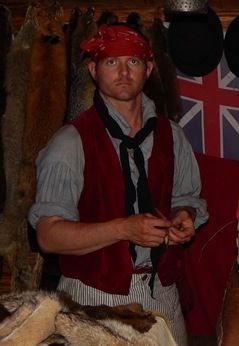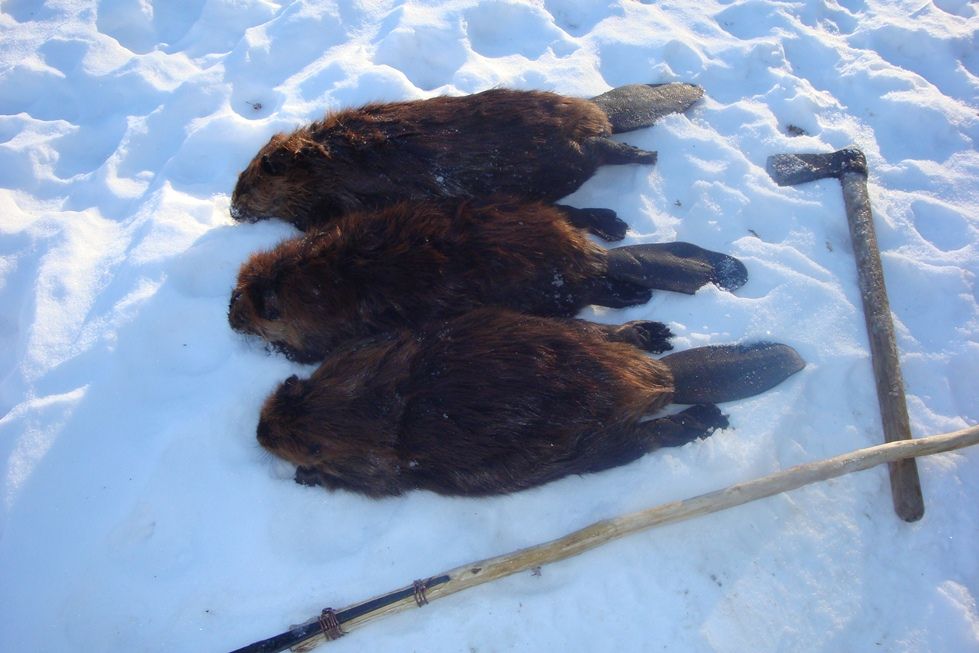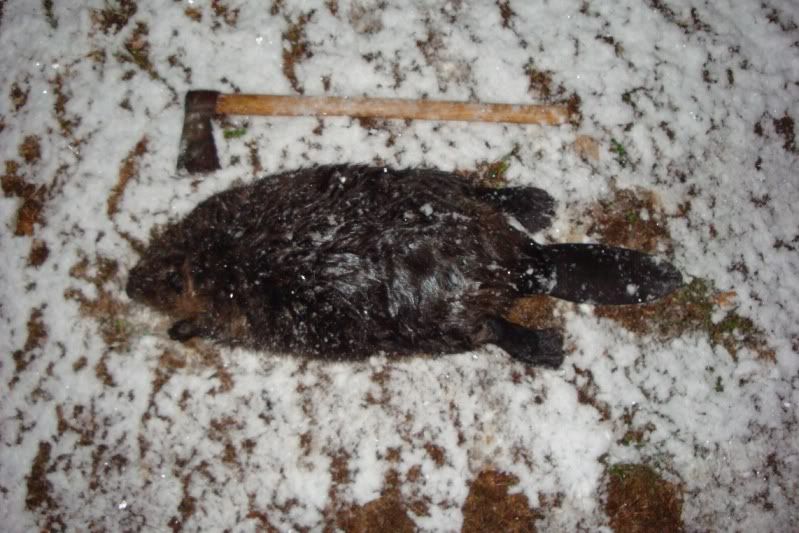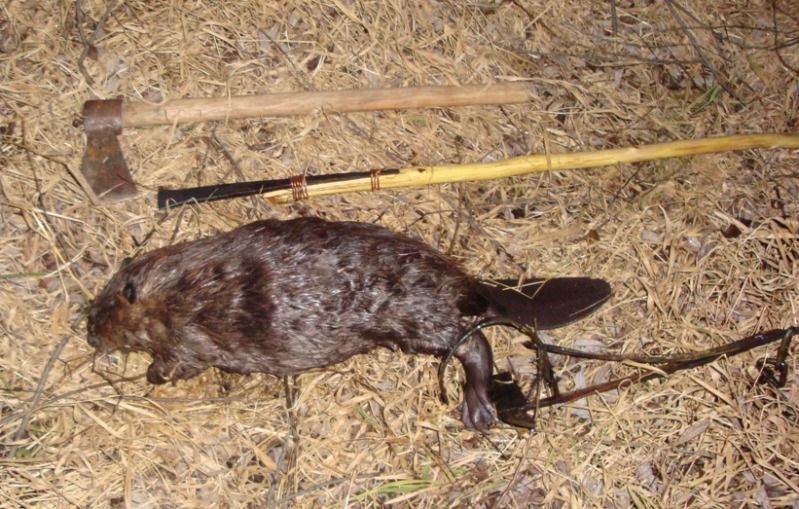Tomahawks and the mountaineers....
Sept 3, 2014 16:18:03 GMT -7
Post by Chuck Burrows on Sept 3, 2014 16:18:03 GMT -7
It seems to me that over the last twenty or so years it has become a "factoid" amongst many RMFT researchers that tomahawks were seldom carried by the RMFT mountaineers since they were plain hard working Joe's and so wouldn't pay for or use such a supposedly "useless" tool. The basis for this "factoid" is one on which I once again don't fully agree based on my research. Some of this I believe is at least partly based on modern folks using some of the smaller repro tomahawks which are admittedly not very good multi-use tools/weapons, but rather intended only as weapons.
After a basic search of just some of the online materials available to all, here is some primary resource material for the use of tomahawks during the RMFT era. A couple of the resources point to the usage by the military and while I admit that such documentation cannot necessarily be used for the RMFT civilian usage, it for me at least, does point to the fact that tomahawks were still considered to be a valuable tool/weapon well into the 19th Century.
"We have also found no documentation, sketches or paintings of trappers with “tomahawks” thrust into their belts..."
Some Thoughts on Belts, Sashes & Suspenders 1800-1840
Gene Hickman, AMM Manuel Lisa Party
www.manuellisaparty.com/articles/pfd's/Belts%20%20Sashes.pdf
Well I stumbled across this one Miller field sketch and a later painting apparently based on that sketch, that does show a hawk or belt axe carried under the belt without a cover - The gent carrying it appears to be Capt Stewart, who was most likely emulating the mountaineers as he had with his clothes and much/most of his gear since he first arrived in the West:
The original field sketch "Herd of Horses"

The later painting "Indian Guide"

Here's the link for a larger view of this image
www.the-athenaeum.org/art/display_image.php?id=28553
James, Thomas. Three years among the Indians and Mexicans. Waterloo, Ill., Printed at the office of the "War Eagle," 1846.
user.xmission.com/~drudy/mtman/html/james/jamesint.html
"At noon when we stopped, the men rolled up a barrel of pork on to the deck and one of them, named Cheek bestrided with a tomahawk, crying out "give the word Captain."
"At the same time Cheek was brandishing his tomahawk over the pork barrel and clamoring for the "word."
"I saw that he was unarmed, while I had two pistols, a tomahawk, and knife in my belt, and could anticipate the first hostile motion from him;"
"We saw from the marks on the ground that he must have fought in a circle on horseback, and probably killed some of his enemies, being a brave man, and well armed with a rifle, pistol, knife and tomahawk." referring to George Drouillard aka Druyer of the L & C Expedition
"Proceeding on we came to the Shining Mountains, and a high hill evidently based upon salt. It stands near the salt branch, the banks of which were composed of salt rocks, from which the men broke off large pieces with their tomahawks."
"We stood in a circle with our backs to the goods and saddles heaped up above all our heads; and with our rifles raised to our breasts, and our fingers on the triggers. We were also armed with knives and tomahawks."
------------------------------------------------------------------------------------------------------------
The Personal Narrative of James O. Pattie, of Kentucky, during an expedition from St. Louis, through the vast regions between that place and the Pacific ocean, and thence back through the city of Mexico to Vera Cruz, during journeyings of six years; ... Published: John H. Wood. Cincinnati, 1831.
user.xmission.com/~drudy/mtman/html/pattie/pattie.html
"We had ten horses packed with traps, trapping utensils, guns, ammunition, knives, tomahawks, provisions, blankets, and some surplus arms, as we anticipated that we should be able to gain some additions to our number by way of recruits, as we proceeded onward."
------------------------------------------------------------------------------------------------------------
James, Edwin. Account of an Expedition from Pittsburgh to the Rocky Mountains, Performed in the Years 1819, 1820. By Order of the Hon. J.C. Calhoun, Secretary of War, under the Command of Maj. S.H. Long, of the U.S. Top. Engineers. Compiled from the Notes of Major Long, Mr. T. Say, and Other Gentlemen of the Party, by Edwin James, Botanist and Geologist to the Expediton. In Three Volumes. (London: Printed for Longman, Hurst, Rees, Orme, and Brown, 1823). Volume 3.
archive.org/details/accountofexpedit01jame
"We were well armed and equipped, each man carrying a yauger or rifle gun, with the exception of two or three who had muskets; most of us had pistols, all tomahawks and long knives, which we carried suspended at our belts."
------------------------------------------------------------------------------------------------------------
My sixty years on the plains: trapping, trading, and Indian fighting /by W.T. Hamilton (Bill Hamilton) ; edited by E. T. Sieber
archive.org/details/mysixtyyearsonpl00hami
"Each man was armed with a rifle, two pistols, a tomahawk, and a large knife, commonly called " tooth-picker. " Besides this, two of our men had bows and arrows, and were experts with them."
and yes some of these may reference belt axes rather than tomahawks per se, but at this point I will take them at face value that they are in fact referring to tomahawks..
After a basic search of just some of the online materials available to all, here is some primary resource material for the use of tomahawks during the RMFT era. A couple of the resources point to the usage by the military and while I admit that such documentation cannot necessarily be used for the RMFT civilian usage, it for me at least, does point to the fact that tomahawks were still considered to be a valuable tool/weapon well into the 19th Century.
"We have also found no documentation, sketches or paintings of trappers with “tomahawks” thrust into their belts..."
Some Thoughts on Belts, Sashes & Suspenders 1800-1840
Gene Hickman, AMM Manuel Lisa Party
www.manuellisaparty.com/articles/pfd's/Belts%20%20Sashes.pdf
Well I stumbled across this one Miller field sketch and a later painting apparently based on that sketch, that does show a hawk or belt axe carried under the belt without a cover - The gent carrying it appears to be Capt Stewart, who was most likely emulating the mountaineers as he had with his clothes and much/most of his gear since he first arrived in the West:
The original field sketch "Herd of Horses"

The later painting "Indian Guide"

Here's the link for a larger view of this image
www.the-athenaeum.org/art/display_image.php?id=28553
James, Thomas. Three years among the Indians and Mexicans. Waterloo, Ill., Printed at the office of the "War Eagle," 1846.
user.xmission.com/~drudy/mtman/html/james/jamesint.html
"At noon when we stopped, the men rolled up a barrel of pork on to the deck and one of them, named Cheek bestrided with a tomahawk, crying out "give the word Captain."
"At the same time Cheek was brandishing his tomahawk over the pork barrel and clamoring for the "word."
"I saw that he was unarmed, while I had two pistols, a tomahawk, and knife in my belt, and could anticipate the first hostile motion from him;"
"We saw from the marks on the ground that he must have fought in a circle on horseback, and probably killed some of his enemies, being a brave man, and well armed with a rifle, pistol, knife and tomahawk." referring to George Drouillard aka Druyer of the L & C Expedition
"Proceeding on we came to the Shining Mountains, and a high hill evidently based upon salt. It stands near the salt branch, the banks of which were composed of salt rocks, from which the men broke off large pieces with their tomahawks."
"We stood in a circle with our backs to the goods and saddles heaped up above all our heads; and with our rifles raised to our breasts, and our fingers on the triggers. We were also armed with knives and tomahawks."
------------------------------------------------------------------------------------------------------------
The Personal Narrative of James O. Pattie, of Kentucky, during an expedition from St. Louis, through the vast regions between that place and the Pacific ocean, and thence back through the city of Mexico to Vera Cruz, during journeyings of six years; ... Published: John H. Wood. Cincinnati, 1831.
user.xmission.com/~drudy/mtman/html/pattie/pattie.html
"We had ten horses packed with traps, trapping utensils, guns, ammunition, knives, tomahawks, provisions, blankets, and some surplus arms, as we anticipated that we should be able to gain some additions to our number by way of recruits, as we proceeded onward."
------------------------------------------------------------------------------------------------------------
James, Edwin. Account of an Expedition from Pittsburgh to the Rocky Mountains, Performed in the Years 1819, 1820. By Order of the Hon. J.C. Calhoun, Secretary of War, under the Command of Maj. S.H. Long, of the U.S. Top. Engineers. Compiled from the Notes of Major Long, Mr. T. Say, and Other Gentlemen of the Party, by Edwin James, Botanist and Geologist to the Expediton. In Three Volumes. (London: Printed for Longman, Hurst, Rees, Orme, and Brown, 1823). Volume 3.
archive.org/details/accountofexpedit01jame
"We were well armed and equipped, each man carrying a yauger or rifle gun, with the exception of two or three who had muskets; most of us had pistols, all tomahawks and long knives, which we carried suspended at our belts."
------------------------------------------------------------------------------------------------------------
My sixty years on the plains: trapping, trading, and Indian fighting /by W.T. Hamilton (Bill Hamilton) ; edited by E. T. Sieber
archive.org/details/mysixtyyearsonpl00hami
"Each man was armed with a rifle, two pistols, a tomahawk, and a large knife, commonly called " tooth-picker. " Besides this, two of our men had bows and arrows, and were experts with them."
and yes some of these may reference belt axes rather than tomahawks per se, but at this point I will take them at face value that they are in fact referring to tomahawks..







 .........yikes.....That's only 10lbs lighter than my bloodhound!.......so when I used the term "belt axe" for personal use......what I meant was tomahawk.......
.........yikes.....That's only 10lbs lighter than my bloodhound!.......so when I used the term "belt axe" for personal use......what I meant was tomahawk.......  ...so.....I'm wondering if I used the term incorrectly, would it perhaps been used more generically back in the first half of the 19th?
...so.....I'm wondering if I used the term incorrectly, would it perhaps been used more generically back in the first half of the 19th?